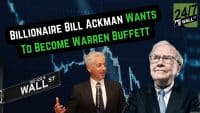 It is not unusual for brands to disappear. It is unusual to see major brands resurrected. Scores of brands like New Coke, Circuit City, and Borders are likely to be gone forever. But a number of companies find that certain dying brands still have some attraction for consumers. This may be because at one time they were well-known, at least well enough to make them worthwhile targets for new investment. 24/7 Wall St. looked at the world of dying brands to find several that, with product changes and marketing dollars, have come back to their previous levels of sales and popularity.
It is not unusual for brands to disappear. It is unusual to see major brands resurrected. Scores of brands like New Coke, Circuit City, and Borders are likely to be gone forever. But a number of companies find that certain dying brands still have some attraction for consumers. This may be because at one time they were well-known, at least well enough to make them worthwhile targets for new investment. 24/7 Wall St. looked at the world of dying brands to find several that, with product changes and marketing dollars, have come back to their previous levels of sales and popularity.
Read The Six Brands That Have Come Back From The Dead
Most of the brands on the 24/7 Wall St. “Brands That Have Come Back From the Dead” have long histories. Brands, including VW, Lego, and Nintendo are nearly a century or more old. Even Apple and Camaro have been consumer products for decades. All of them were also the market leaders, or at least brands with very large sales, in their sectors before their revenue declined.
24/7 Wall St. looked at consumer brands that were among the dominant products in their markets at some time in the past 50 years but have lost their place almost completely. They were revived by their parent companies or new owners, and are now profitable and healthy again. Some, like Apple and Marvel, are the leaders in their industries.
1. Lego
The LEGO Group has been around since 1932. For decades, the company was a leading toy manufacturer, but Lego’s sales dropped 40% in the two years since 2002 — due in part to the growing popularity of electronic toys. In 2004, the company had debts of almost $1 billion and was near bankruptcy. Then, spurred by the recession and the low cost of its toys, sales of Lego products began to pick back up, and have been increasing since. The company cut its workforce by 1,000 and reduced the amount of pieces it produces from 13,000 to 6,000, discontinuing its unpopular toys. For the first half of 2011, net sales have been up 25% over the first half of 2010. Today, it is the world’s fourth largest toy manufacturer.
Also Read: China’s Car Market Slows To A Halt
2. Marvel
Marvel is one of the most recognizable brands in the comic book industry, owing its fortunes to popular characters like Spider-Man, X-Men and The Hulk. But Marvel’s current success follows a serious slump. In late 1996, after declining sales of comics and trading cards, the company filed for bankruptcy. In 2000, the company released the movie X-Men — a huge success, which grossed almost $300 million worldwide. Two years later, Spider-Man was released, becoming the top grossing movie of the year. In 2009, Marvel Entertainment was purchased by Disney (NYSE: DIS) for $4 billion. This summer the company released X-Men: First Class, which has already grossed over $353 million worldwide in theaters.
3. Old Spice
Old Spice, a classic American brand that has been around since 1938, attained huge popularity by the 1970s. By 1990, however, the brand had become tired, associated more with its aging customer base than anything else. In 2000, the company, now owned by Procter & Gamble (NYSE: PG), came out with Old Spice Red Zone and revamped its advertising campaigns, focusing on the younger generation. Popular online ads featuring the Old Spice Man went viral, propelling Old Spice to the lead in the body wash market. In June 2010, sales increased a whopping 107%.
Also Read: Dell Struggles To Stay In Third Place
4. Apple
With its Macintosh line, Apple (NASDAQ: AAPL) was a premiere personal computer manufacturer in the late 1980s. In 1985, Steve Jobs left his position after being marginalized by the board and new CEO, John Scully. The company did well through the end of the decade, but performed poorly in the mid 1990s. Jobs returned in 1997 and, after 18 months of losses, the company received a $150 million investment from Microsoft. In 1998, the company released the iMac, followed by the iPod in 2001. These products marked Apple’s return and spurred its rise as a competitive consumer electronics company. Since then, its top position has been cemented by the wildly popular iPhone and iPad. Apple is now one of the world’s most loved and followed brands.
Also Read: Gap To Close 200 Stores – Which Retailer Is Next
5. Nintendo
In the late 1980s through the 1990s, Japanese game company Nintendo dominated the market with its Gameboy, Nintento Entertainment System, and Super Nintendo. In mid-90s, the company introduced the Nintendo 64 to combat the next generation of consoles that incorporated 3D graphics for the first time. While the N64 sold well, Sony had entered the market and its PlayStation sold more than double that of the N64. Nintendo would continue to struggle against its rivals. The Nintendo GameCube sold less than Microsoft’s Xbox and was blown out of the water by the PlayStation 2. In 2006, Nintendo finally recovered when it released the Wii, blowing out both the Xbox 360 and the PlayStation 3. The biggest reason for the Wii’s success was its new interactive design and ease of use. The Wii was successfully marketed to families with children, rather than just to video game players. To date the Wii has sold more than 86 million units.
6. Volkswagen
Volkswagen was relatively unknown in the U.S. during the 1960s, even though its products were first sold here in 1949. By 1970, the company controlled 7% of the market. It was also the first foreign automobile company to open an assembly plant in the country since the 1920s. Despite their initial success, a number of missteps, including the release of the unpopular Rabbit, caused sales to plummet. According to a Wall Street Journal article, “By 1992, U.S. annual sales had hit a low of 49,000 cars, and VW contemplated pulling out of the U.S. altogether.” Just six years later, following the launch of the new Beetle, the company began its comeback. In 2000, the car company reported its best U.S. sales month in 26 years. In 2010, Volkswagen sold more than 250,000 cars in the U.S. — its best year since 2003.
Douglas A. McIntyre, Michael B. Sauter, Charles B. Stockdale
It’s Your Money, Your Future—Own It (sponsor)
Retirement can be daunting, but it doesn’t need to be.
Imagine having an expert in your corner to help you with your financial goals. Someone to help you determine if you’re ahead, behind, or right on track. With SmartAsset, that’s not just a dream—it’s reality. This free tool connects you with pre-screened financial advisors who work in your best interests. It’s quick, it’s easy, so take the leap today and start planning smarter!
Don’t waste another minute; get started right here and help your retirement dreams become a retirement reality.
Thank you for reading! Have some feedback for us?
Contact the 24/7 Wall St. editorial team.





